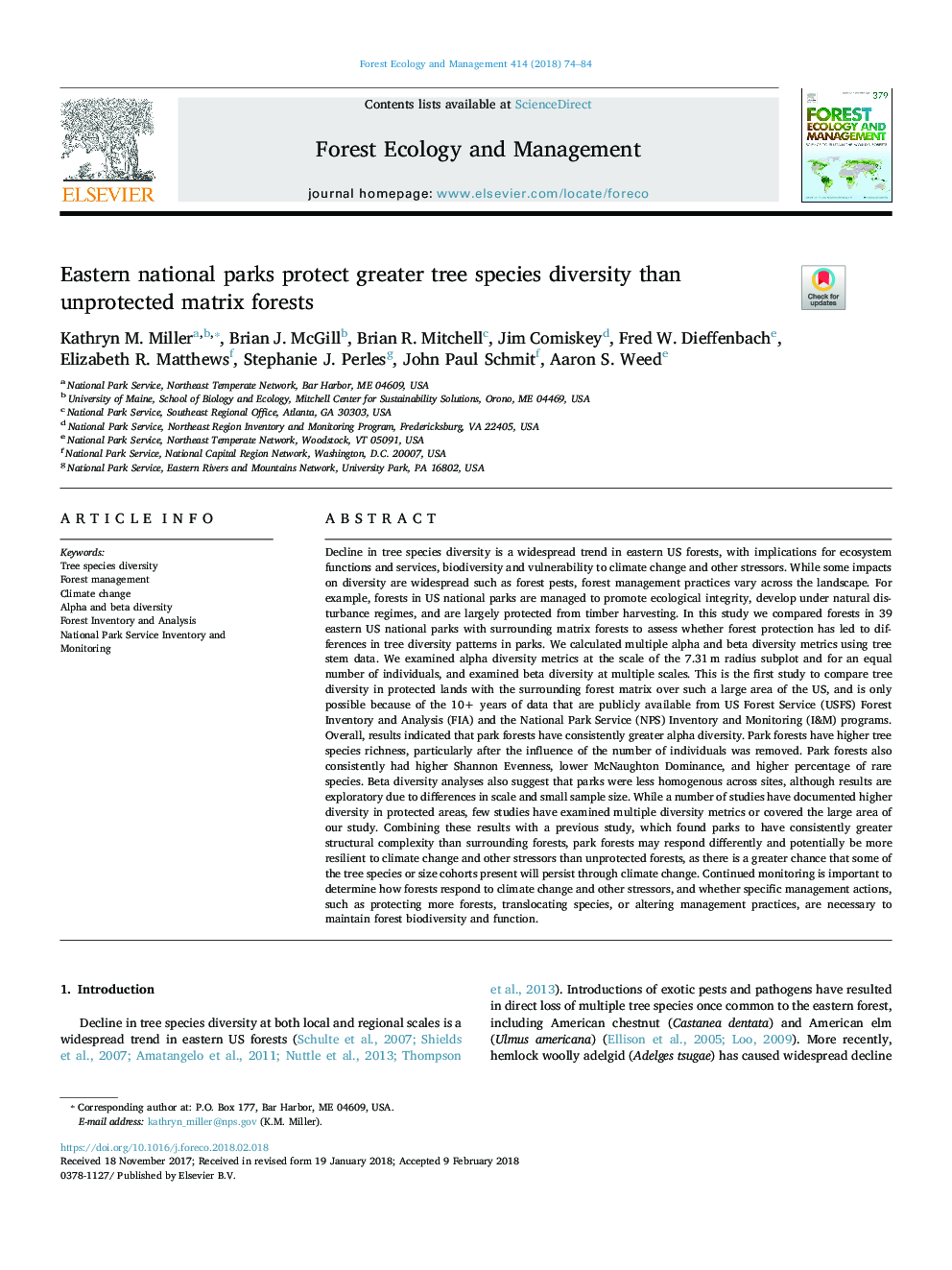| کد مقاله | کد نشریه | سال انتشار | مقاله انگلیسی | نسخه تمام متن |
|---|---|---|---|---|
| 6541788 | 1421344 | 2018 | 11 صفحه PDF | دانلود رایگان |
عنوان انگلیسی مقاله ISI
Eastern national parks protect greater tree species diversity than unprotected matrix forests
ترجمه فارسی عنوان
پارک های ملی شرقی از تنوع بیشتر گونه های درختی نسبت به جنگل های ماتریس محافظت نشده محافظت می کند
دانلود مقاله + سفارش ترجمه
دانلود مقاله ISI انگلیسی
رایگان برای ایرانیان
کلمات کلیدی
تنوع گونه های درختی، مدیریت جنگل، تغییر آب و هوا، تنوع آلفا و بتا، موجودی جنگل و تجزیه و تحلیل، سرویس پارک ملی و نظارت،
موضوعات مرتبط
علوم زیستی و بیوفناوری
علوم کشاورزی و بیولوژیک
بوم شناسی، تکامل، رفتار و سامانه شناسی
چکیده انگلیسی
Decline in tree species diversity is a widespread trend in eastern US forests, with implications for ecosystem functions and services, biodiversity and vulnerability to climate change and other stressors. While some impacts on diversity are widespread such as forest pests, forest management practices vary across the landscape. For example, forests in US national parks are managed to promote ecological integrity, develop under natural disturbance regimes, and are largely protected from timber harvesting. In this study we compared forests in 39 eastern US national parks with surrounding matrix forests to assess whether forest protection has led to differences in tree diversity patterns in parks. We calculated multiple alpha and beta diversity metrics using tree stem data. We examined alpha diversity metrics at the scale of the 7.31â¯m radius subplot and for an equal number of individuals, and examined beta diversity at multiple scales. This is the first study to compare tree diversity in protected lands with the surrounding forest matrix over such a large area of the US, and is only possible because of the 10+ years of data that are publicly available from US Forest Service (USFS) Forest Inventory and Analysis (FIA) and the National Park Service (NPS) Inventory and Monitoring (I&M) programs. Overall, results indicated that park forests have consistently greater alpha diversity. Park forests have higher tree species richness, particularly after the influence of the number of individuals was removed. Park forests also consistently had higher Shannon Evenness, lower McNaughton Dominance, and higher percentage of rare species. Beta diversity analyses also suggest that parks were less homogenous across sites, although results are exploratory due to differences in scale and small sample size. While a number of studies have documented higher diversity in protected areas, few studies have examined multiple diversity metrics or covered the large area of our study. Combining these results with a previous study, which found parks to have consistently greater structural complexity than surrounding forests, park forests may respond differently and potentially be more resilient to climate change and other stressors than unprotected forests, as there is a greater chance that some of the tree species or size cohorts present will persist through climate change. Continued monitoring is important to determine how forests respond to climate change and other stressors, and whether specific management actions, such as protecting more forests, translocating species, or altering management practices, are necessary to maintain forest biodiversity and function.
ناشر
Database: Elsevier - ScienceDirect (ساینس دایرکت)
Journal: Forest Ecology and Management - Volume 414, 15 April 2018, Pages 74-84
Journal: Forest Ecology and Management - Volume 414, 15 April 2018, Pages 74-84
نویسندگان
Kathryn M. Miller, Brian J. McGill, Brian R. Mitchell, Jim Comiskey, Fred W. Dieffenbach, Elizabeth R. Matthews, Stephanie J. Perles, John Paul Schmit, Aaron S. Weed,
